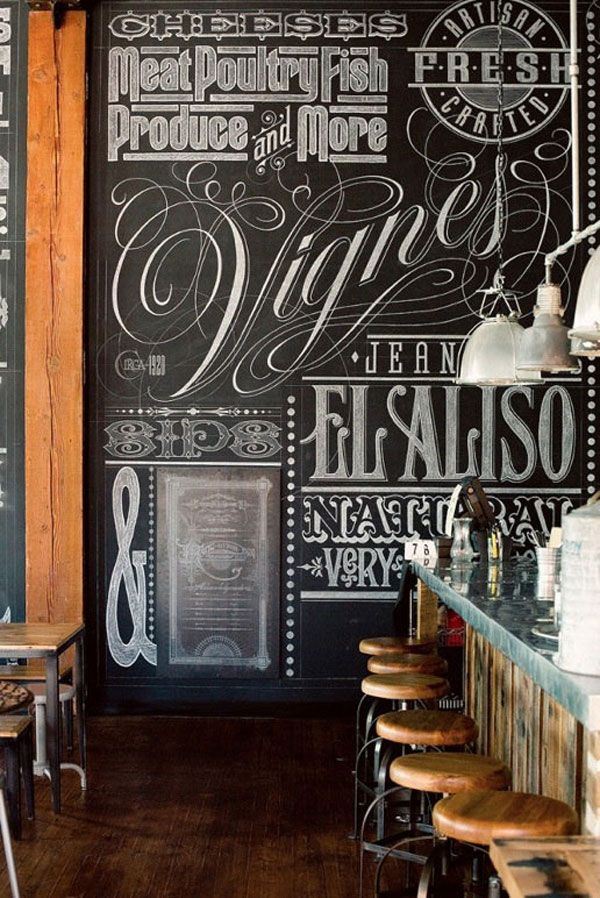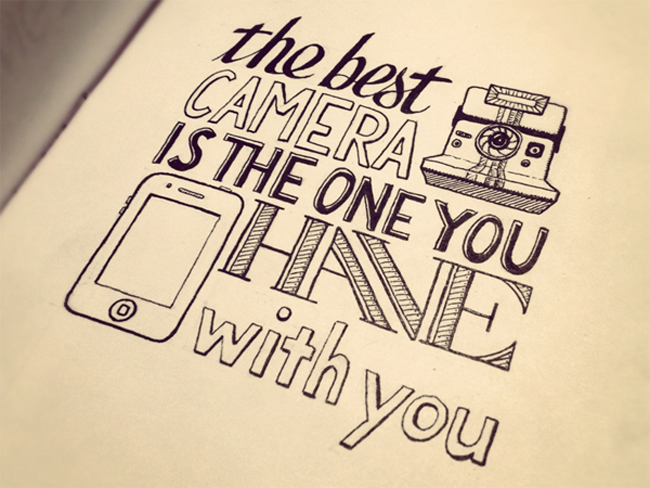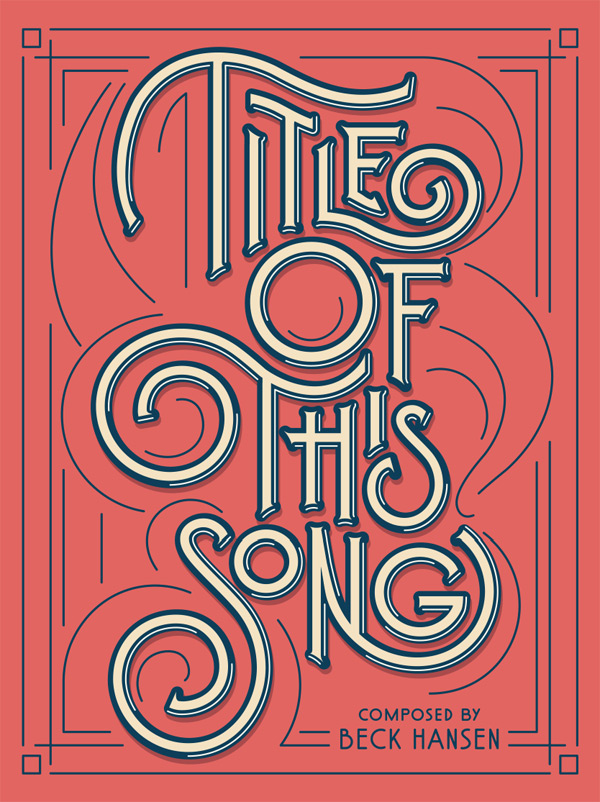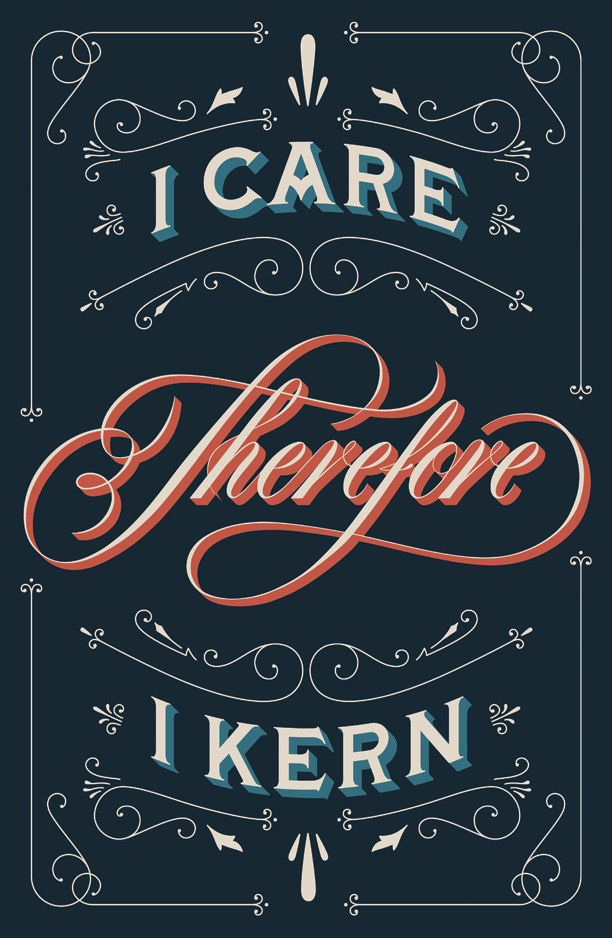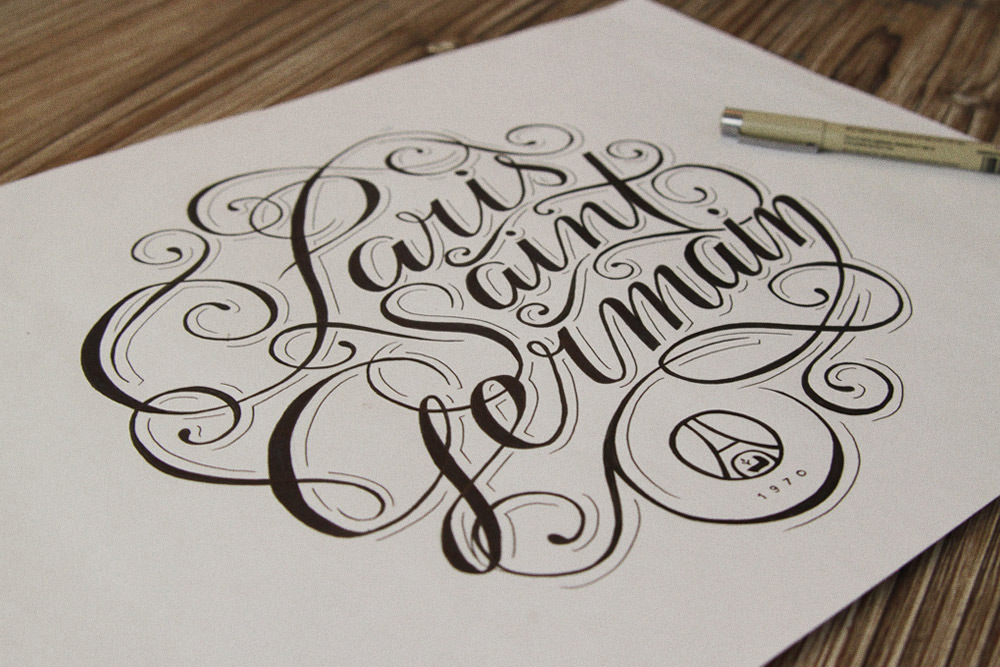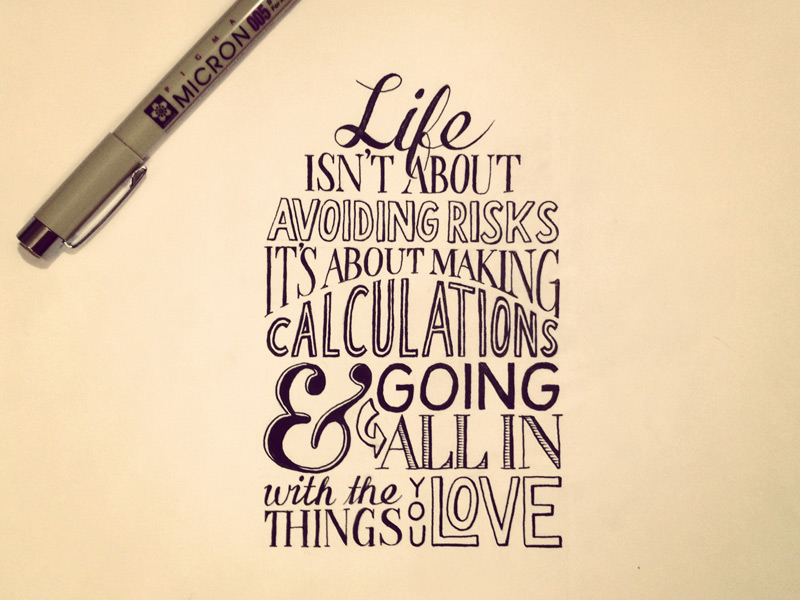So there I sat at my desk, Monster drink in tow with no clue what to write. Finally, the Monster starts kicking in, I begin my research topic on the notion that hand done lettering or calligraphy was a dying art. It is a statement that I recalled hearing since my first class in Tyler during my color foundation drawing class. For me, drawing was hard enough as it is, but hand doing lettering was a whole other league of its own.
Through my graphic design courses, Jessica Hische’s name is often dropped as a prime example of typography, most of it being hand done. Using that as my starting point I went to her website and ended up in her FAQ. In the section, “what’s the difference between lettering and fonts” and “how did you become a letterer,” explains the difference between “fonts” and “lettering”. In Hische’s own words, “lettering is essentially illustrations of letters, words, and phrases” rather than designing a whole entire typeface system. With a basic understanding, I continued on my journey of discovery, with actually reading articles about why this art is considered dying. I mean, designers like Jessica Hische does not seem to be the only one around doing it.
As the article “The Dying Art of Handwriting” puts it, the reason for this art “dying” or fading is because of the technological advances. Attributing the replacement of a $300 calligraphy pen for graduation to getting a Macbooks or iPad, the “new writing tools of the digital age.” A good portion of this article is dedicated to talking about how handwriting is similar to a muscle, that it builds “hand-eye coordination and […] fine motor skills.” That there was even studies conducted with children who practiced cursive writing at an early age in contrast to children who do not. The children that practiced end up with higher academic success in the future. It is specifically cursive writing though in this study, apparently connecting one letter to another literally helps to connect the dots or nerves in our brains.
Not only is practicing writing cognitively good for us, but it is also a good way of distinguishing a person’s personality. I found this to be interesting because the one-way type is used in design, is to express a certain emotion or atmosphere, and here this article talks about a person’s personality through their handwriting. It is also mentioned that writing versus just typing directly, people are able to express more ideas because of the direct correlation between writing and thinking. As a designer, reading these past few passages really made me want to try doing lettering myself. Especially since I struggle with expressing more ideas.
In the last few passages of the article, the author expressed what she believes to be the reason of declining numbers in writing. Simply that schools no longer are focused on teaching children handwriting. That emoticons are more likely used by kids of today to express themselves than to write a letter.
On to the next resource, from Claudia Pearson. Here is another fellow designer that heard of “the dying art of hand lettering,” who like me also is confused. The author states despite notions of this being a dying art form, there is “evidently a huge resurgence” (this article was written in 2014) going on […].” She follows up by posting a few images of lettering. It good to know that I am not going crazy thinking that lettering and calligraphy is matter of fact, not dying after all.
Lastly, the final article I read by Angelynn Grant, where she asks three “typography experts to weigh in on the recent hand-lettering boom.” She begins by stating that the past few years, as in starting around 2009, lettering has been exploding. Offering a quality that can “evoke the DIY/ craft,” and may relieve the sense from the “sterility of Modernism.”
One artist, Ale Paul, considers the different environment of the present to the past. At one point, the mass wanted to chase, perfect the modern/ machine cleanses. Now that the availability is accessible to everyone and is easily created, the majority is fixed on chasing the past. Seeing how designs from the past can fit into our own present period.
Another artist, Ken Barber, suggest that the “popularity seems to have risen among […] designers who don’t specialize in the practice.”
As an end note to this assignment I just want to express that it is a relief to know that lettering and calligraphy are both not dying arts. Time to brush up on my lettering and maybe calligraphy skills!
Seb Lester talking about his work. (1:59)
Seb Lester recreating famous logos. Commence awe and drooling. (3:02)
Bibliography:
Have a good one~


